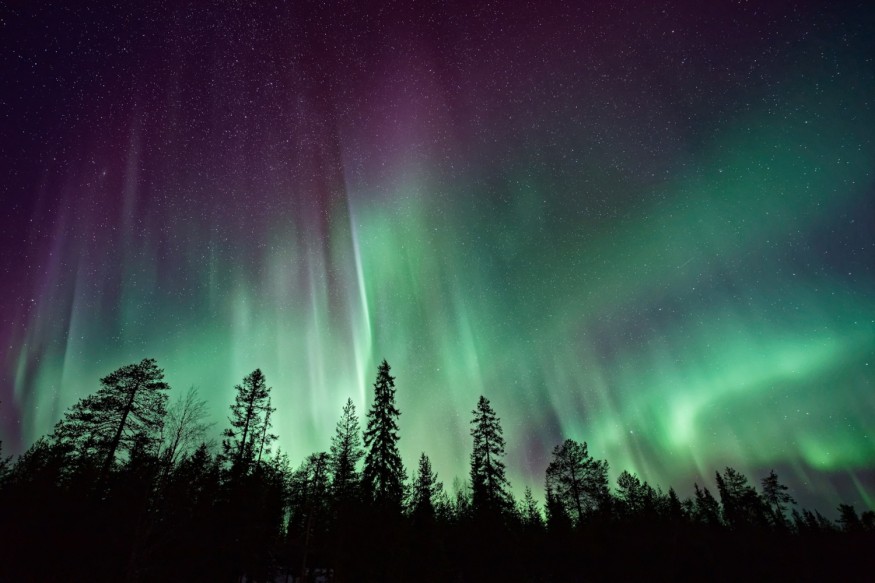
According to weather experts, the solar storm makes the northern lights viewable from 17 states as long as the skywatchers are far from the brightness of city lights.
Northern Lights for 17 States
As a result of a geomagnetic storm that may affect the atmosphere in the middle of the week, seventeen US states may be able to see the Northern Lights.
Cities including Seattle, Iowa, Chicago, Cleveland, Boston, and Nova Scotia will offer skywatchers the opportunity to witness the mesmerizing phenomenon of the Northern Lights, also referred to as the aurora borealis, on Wednesday. The KP-index, which goes from 0 to 9 and measures global auroral activity, will be at Kp-5 that evening, where any Kp-5 value or higher indicates the likelihood of a geomagnetic storm.
The aurora will become stronger on Thursday as the KP index rises, increasing the visibility of the vibrant lights.
On July 12 and 13, the aurora borealis, or northern lights, will be visible in parts of Washington, Idaho, Vermont, Montana, North Dakota, South Dakota, Wyoming, New Hampshire, Minnesota, Nebraska, Massachusetts, Maryland, Michigan, New York, Ohio, Wisconsin, and Maine, according to the Geophysical Institute at the University of Alaska at Fairbanks, as well as parts of Canada, including Vancouver.
In cities like Boston, Chicago, Cleveland, and Seattle, the aurora will be seen low on the horizon, while cities like Milwaukee, Minneapolis, and Helena, Montana will all have a view overhead.
Aurora Borealis
An astronomical phenomenon known as the Northern Lights is typically seen at the magnetic poles of the northern (aurora borealis) and southern (aurora australis) hemispheres. The Northern Lights will be visible this week farther south than usual because of the solar storm.
The collisions between particles with electrical charges flowing out from the sun through the solar wind and molecules and atoms of gas, principally oxygen and nitrogen, in the Earth's atmosphere give rise to the many colors of lights, according to an explanation by the University of Alaska at Fairbanks.
These particles emit light, creating a stunning variety of hues in the sky but the hue of the aurora can change based on the location of the collisions, the makeup of the atmosphere, and its density. So, it won't be the same as previous auroras or as in other places but is often green.
The Northern Lights were last spotted across 30 states in April, making the approaching storm the fourth solar storm since the beginning of 2019.
Alaso Read : Airglow Displays Vibrant Green Streaks in the Colorado Sky, Hints Upcoming Solar Maximum
Light Pollution via City Lights
According to the National Oceanic and Atmospheric Administration (NOAA), the ideal time to observe the aurora is between 10 PM and 2 AM local time, however, skywatchers should try to avoid city lights for a better view. According to the NOAA, even the brightness of the full moon can trump the vividness of the dancing lights. It may be helpful to ascend to higher land since experts encourage individuals to locate a location with an "unobstructed view" of the north, TIME reports.
Anthropogenic light pollution, according to a 2016 study published in the journal Royal Society Open Science, interferes with the night sky's normal patterns. The urban sky was frequently 20 times brighter than the amount of darkness found in nature on clear, moonless nights, according to the authors. There are significant negative repercussions of these brighter night skies.
According to estimates, 60% of Europeans can no longer appreciate the Milky Way's magnificence. It has an impact on the likelihood of viewing the aurora as well because light pollution frequently shines brighter than this beloved natural display.
Related Article : Giant Sunspot Visible Without Magnification Faces Earth
© 2026 NatureWorldNews.com All rights reserved. Do not reproduce without permission.





